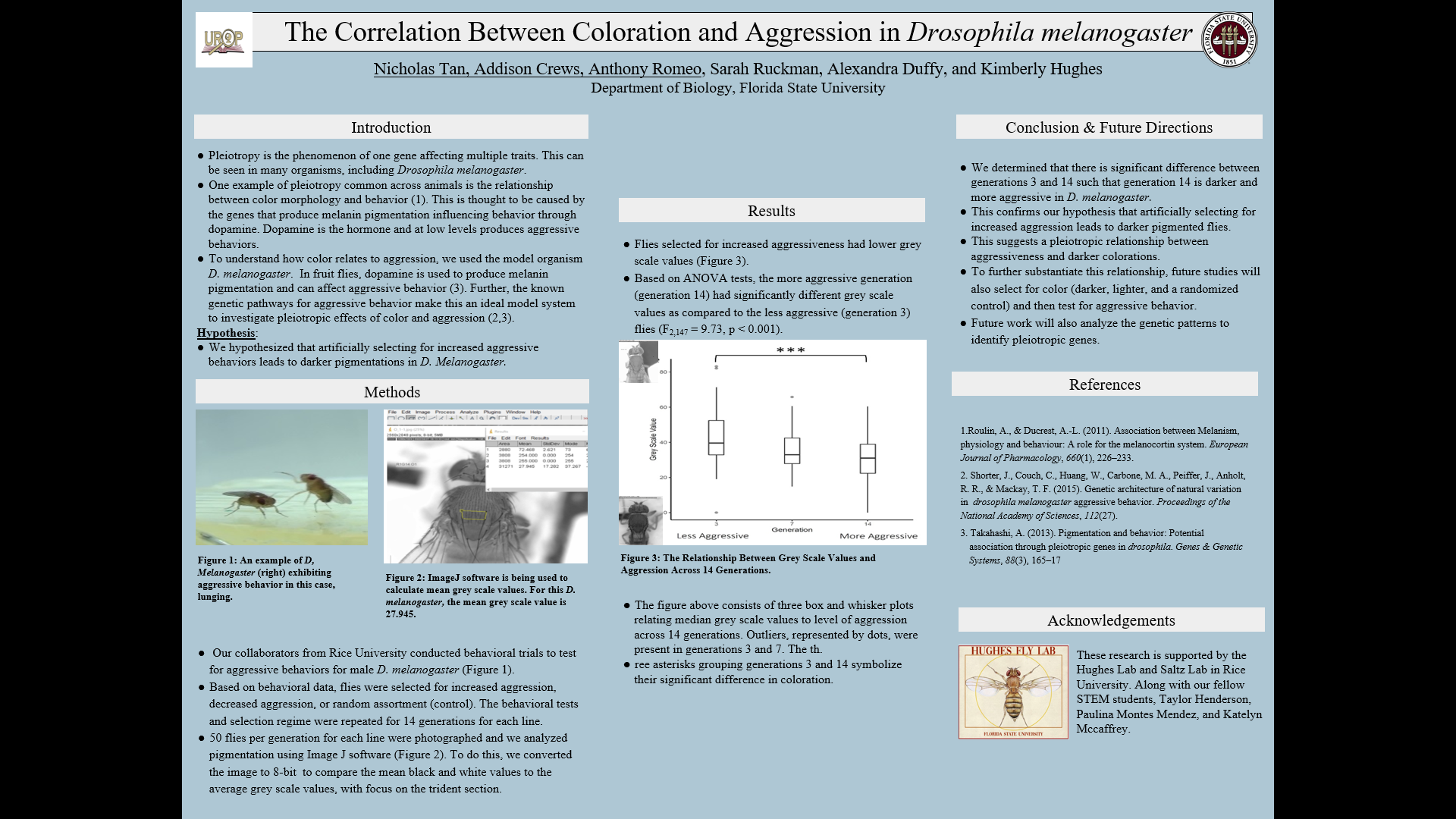Research Symposium
23rd annual Undergraduate Research Symposium, April 6, 2023
Nicholas Tan Poster Session 2: 1:30 pm - 2:30 pm/ Poster #116

BIO
My name is Nicholas Tan and I am currenly a sophmore here at FSU. I was born and raised in Sarasota, Florida and have lived there my whole life. I am studying Clinical Professions, and interested in the genetic code behind the organism D. Melanogaster. I inted to persue a degree in optometry, and plan on attending optometry school after four years at Florida State University. I currenly work as an opthalmic technician at the Eye Associates of Tallahassee.
The Correlation Between Coloration and Aggression in Drosophila melanogaster
Authors: Nicholas Tan, Kimberly HughesStudent Major: Clinical Professions
Mentor: Kimberly Hughes
Mentor's Department: Biological Science Mentor's College: Florida State University Co-Presenters:
Abstract
Pleiotropy, the phenomenon of one gene controlling multiple traits, is found throughout life. This phenomenon can correlate two seemingly unrelated traits and possibly hinder adaptation. Our lab used the study system Drosophila melanogaster to test for a correlation between behavioral aggression and melanin coloration across multiple generations. Melanogenesis is the process which controls melanin production and is thought to have an inhibitory effect on the production of the neurotransmitter, dopamine, which can influence aggressiveness. Therefore, we hypothesized that artificially selecting for higher levels of aggressive behaviors would lead to darker pigmentation in Drosophila. We tested this by quantifying aggressive behaviors (fencing, boxing, and lunging) over multiple generations to develop three artificially selected strains – high aggression, low aggression, and no selection (control). We analyzed the color pigmentation of these selected lines in Image J by interpreting the mean grey scale value of the pigmentation of the thoracic trident region. As we predicted, our results showed an increase in melanin levels as flies were selected for more aggressive behaviors. This clearly demonstrates these two traits are correlated, but additional work and genetic data is necessary to confirm that the correlation is due to pleitropic effects.
Keywords: Pleiotropy, Drosophila melanogaster, agression, dopamine


